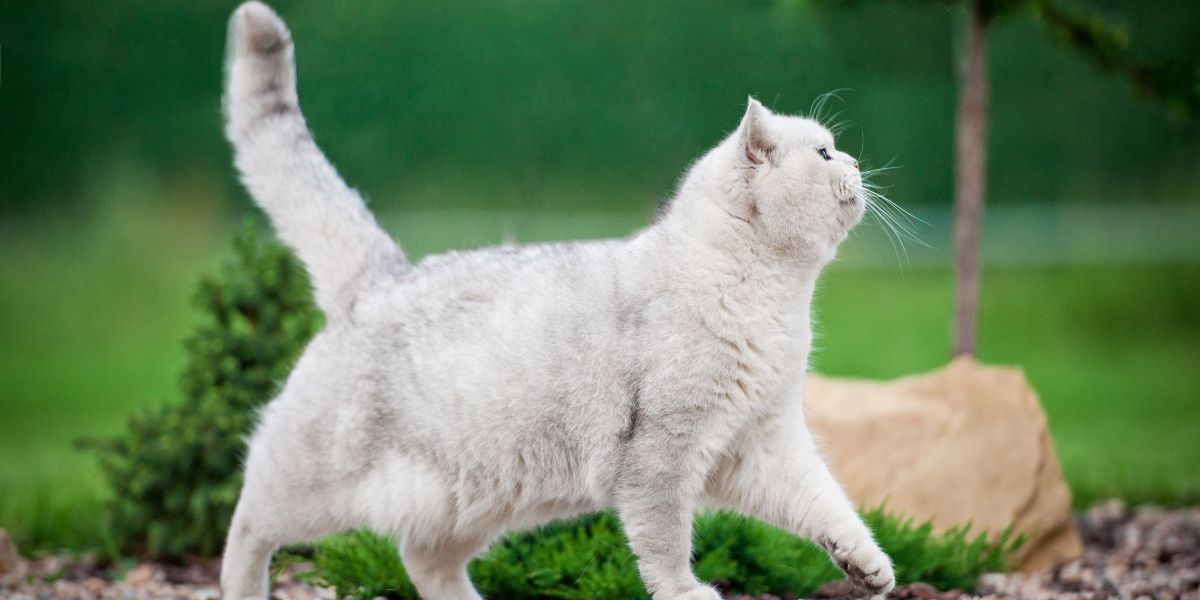
Have you ever watched your cat’s tail and wondered what purpose it serves? Or wondered whether all of the different flicks and swooshes mean anything in cat language?
Well, that tail is a very important appendage and provides your cat with not only physical benefits but behavioral ones, too. Read on to learn all about cat tails.
A Little About Cat Tails
Cat tails are amazing things! Did you know that a cat’s tail is an extension of the spine? The spine is divided into four groups of vertebrae or small bones—cervical, thoracic, lumbar, and caudal. A cat’s tail contains the caudal vertebrae—typically 18 to 23 of them!
Cats have more vertebrae in their thoracic, lumbar, and caudal regions than humans do and this is what gives cats their increased flexibility and agility. Some cat breeds with no tail, or with shorter tails, have far fewer vertebrae in their tail.
Cat tails also contain nerves that not only help them to move, but also enable them to sense the environment around them. Their tails can pick up sensations from around them in their environment and sends messages up the spine to the brain, effectively enabling cats to “feel” with their tails.
In addition, there are also muscles, tendons, and ligaments in a cat’s tail, and these are responsible for movement. A cat’s tail also contains blood vessels, the largest one being the tail vein that runs along the underside of the tail. Last but not least, cats’ tails also contain scent glands called caudal glands.
Can Cats Control Their Tails?
Cats can fully control their tails for voluntary movement, although you might also witness involuntary tail movements when a cat is in a deep sleep and their tail twitches or flicks. Most of the time, a cat is fully aware of what they are doing with their tail and they can move it up and down, side to side, as well as curl it round.
Nerve impulses are sent to the brain, which then sends messages to the muscles in the tail, telling it to move. The type of movement will depend on your cat’s physical and emotional state.
What Are Cat Tails Used For?
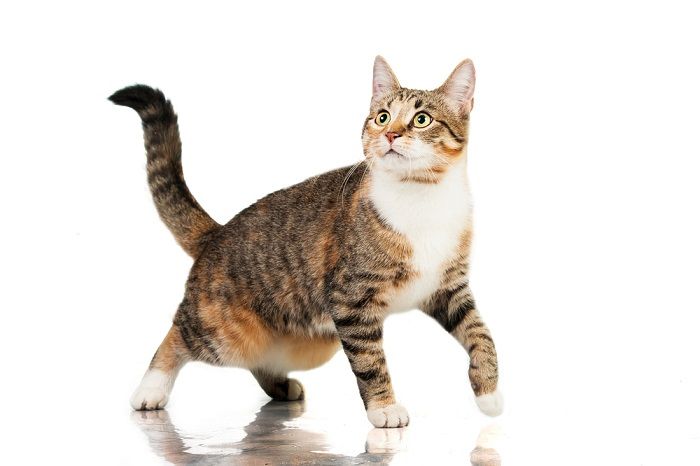
A cat’s tail is a critical part of their movement, balance, and communication.
So, we’ve learned what makes up a cat’s tail structure and how they can control them, but what are cat tails used for?
1. Balance
Tails are very important in helping your cat to balance. Their tail provides a counterbalance that they can adjust as necessary, whether it’s to help them navigate a narrow ledge, or land on all four feet when they jump from a height.
If you watch your cat closely, you will notice that her tail does the opposite of what her body does most of the time. As she jumps up, her tail will move down and as she jumps down, her tail will move up. The same happens when she moves suddenly from side to side.
If she moves left, her tail will move out to the right and vice versa. This sense of balance is also important when a cat hunts its prey and can help them to make a successful kill.
2. Communication
Your cat’s tail is actually very expressive and can give you a good indication of the type of mood your cat is in.
- Gentle tail swish: A gentle tail swish from side to side usually means your cat is happy and in a good mood.
- Tail thrash: If your cat is thrashing her tail or whacking it on the ground, this is usually a sign that she is annoyed and you should take the hint and leave her alone.
- Tail flick: A gentle but abrupt flick from side to side is usually a sign that your cat is excited or on edge. You might see this motion when she is watching a bird through a window, or when she is playing with her toys.
- Tail straight up: This can mean different things depending on the context of the situation. If your cat greets you with a straight-up tail, it usually means she is pleased to see you. It might also be accompanied by a quiver or shake of the end of the tail. If your cat’s tail is straight up and the rest of her body is stiff or arched, then it is usually a sign that your cat is scared or feeling threatened. You might also notice that all the fur on your cat’s tail stand on end, giving it a “bottle-brush” appearance. This is to make themselves look bigger and appear more threatening.
- Tail up but curved round at the top: This is usually a sign that your cat is in a playful mood.
- Tail down or low to the ground: This is often an indicator that your cat is feeling anxious or sometimes even unwell. It could also be a sign of a tail injury.
- Tail curled around their body: A tail wrapped around the legs while seated usually means the cat feels contented, but it could also mean they feel stressed or unwell. A sleeping cat will wrap their tail around their body for comfort and warmth!
- Tail wrapped around you: If your cat wraps her tail around you when you greet her, then take this as a friendly greeting. She is telling you she loves you and is happy to see you!
3. Marking Their Territory
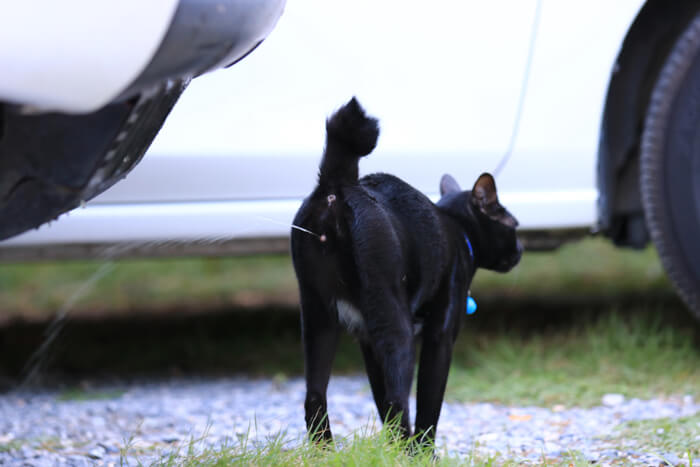
When a cat sprays, it holds its tail straight up, sometimes quivering it.
The caudal scent glands in a cat’s tail are sebaceous glands which means they secrete an oily, smelly substance used for marking their territory.
4. Keeping Warm
Most of the time when your cat is asleep, her tail will be curled around her body. This is a natural instinct that helps maintain body warmth. This is more important in wild cats that are exposed to the elements than in most domestic cats.
Can Cats Injure Their Tails?
Cat tails are so mobile that they can be prone to injury, just like any other part of their body. A cat can break its tail in an accident such as getting it trapped or being trodden on. If the tail is pulled then serious nerve damage can result which can be permanent.
This can result in not only a paralyzed tail, but urinary or fecal incontinence, or the inability to urinate or defecate.
What if My Cat Has No Tail?
Cats can sometimes be born without tails, or need to have them amputated as a result of an accident or injury. These tail-less cats often adapt remarkably well to the loss of their tail and can still balance just as well as other cats.
Cats without a tail will still move whatever small stub of their tail remains, showing that tail movement is an automatic response to whatever is happening in the cat’s environment. The Manx cat is a breed of cat that has no tail. Although they are a recognized breed, their lack of tail was originally a result of a genetic mutation.
Why Don’t Cats Like Their Tail Being Touched?
As we’ve learned, cat tails have several important roles and are extremely sensitive. Most cats don’t like their tail being touched because they have evolved to protect this important appendage.
Fun Facts About Cat Tails
- Domestic cats are the only cats who have the ability to walk with their tails straight up in the air. Big cats walk with their tails in a horizontal position or down between their legs.
- Some zoos train their big cats to “offer” their tail to allow a blood sample to be taken. This is useful because it avoids the need for sedating the cat for a minor procedure.
- Though it’s true that cat tails are important for balance and allowing a cat to land on her feet, the “cat-righting reflex” as it’s called is mostly due to a cat’s flexibility and a highly developed vestibular system. In other words, tail-less cats land on their feet just as frequently as a cat with a tail does.
Conclusion
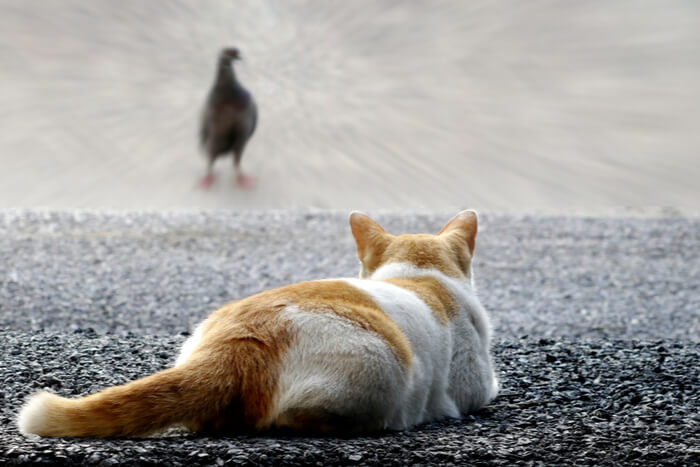
A cat may press their tail to the ground as they stalk their prey.
Who knew there was so much to a cat’s tail? From balance to communication, to scent marking, cat tails are an impressive appendage. If you pay close attention to your cat’s tail, you’ll soon learn to recognize her mood. Just remember to look but don’t touch!
Also Read: Do Cats Have Scent Glands In Their Paws?
Frequently Asked Questions
Does pulling a cat’s tail hurt them?
Yes, it does. A cat’s tail is very sensitive and is very prone to injury if it’s pulled. Pulling a cat’s tail can cause permanent nerve damage which can have very serious consequences for a cat such as incontinence or paralysis.
What are cats without tails called?
Manx cats are a breed of cat that is bred to have no tail. There are also bobtail cats that are bred with a small stub for a tail. Cats that injure their tail sometimes need to have their tail amputated surgically.
Can cats actually control their tails?
Yes, cats can fully control their tails and the movements they make. Tail movements and position can tell you a lot about a cat’s mood and are used to communicate with other cats, as well as for balance.





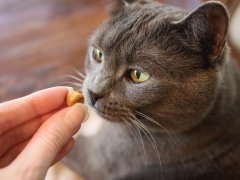


Great article!
What does it mean when a cat’s tail is horizontal? I’ve noticed my cat often walks around with her tail in line with her body and when she sees me or hears me speak it immediately pops up. I wonder if a horizontal position is normal or if she has anxiety when she’s not engaging.
Also, you stated a tail curled around their body could mean they’re worried or unwell. I’ve only seen my feline do this a couple times and I thought she looked so self contained and regal. Perhaps she was not having the best set of moments though. Are worry and being unwell the only possibilities?
Hi Wendy, that’s such a perceptive question. Well done! So, a horizontal tail generally suggests that a cat is relaxed, alert, and curious, while that upward-pointing tail is a sign of increased alertness and pleasure. A curled tail doesn’t always mean that a cat is unwell; cats will, in fact, wrap their tails around their legs or body when they’re simply feeling confident and peaceful. You can learn more about this in our article on cat tail positions.